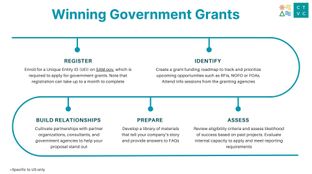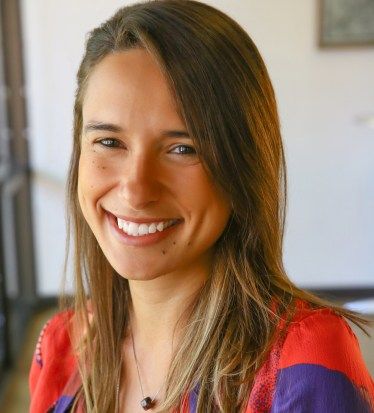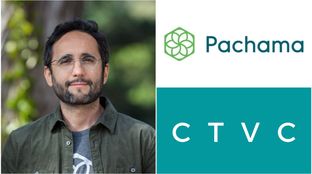
🌎 Get ready with me: Government grants edition 💅💵
A founder’s guide to winning non-dilutive funding with Elemental Excelerator
We sat down with Maria Fujihara, CEO and founder of SINAI Technologies to discuss her software solution to corporate carbon tracking and decarbonization.

We sat down with Maria Fujihara, CEO and founder of SINAI Technologies to discuss her software solution to corporate carbon tracking and decarbonization. Maria founded SINAI in 2017, and two years later Alain Rodriguez, an early-stage Uber employee, joined as co-founder and CTO. Since then, SINAI has attained three significant customers and is poised for rapid growth, particularly in the tailwinds of the recent wave of corporate carbon pledges.
To start us off, how are companies managing their carbon footprint and organizing their climate response today?
Gathering and organizing the data on a large corporation’s carbon footprint is a complex task. Despite this intricacy, the current approach to carbon accounting mostly involves spreadsheets and manpower. (You can be sure that Microsoft is using Excel to track their emissions!) To manage these systems, companies either invest in headcount and end up with an army of sustainability consultants and employees, or they invest in technology. It takes a company, and a specialized technology company at that, to measure a company’s carbon footprint and ensure data from all parts of the business are appropriately aggregated.
SINAI’s software matches internal and external datasets to place everyone on the same page with the most up-to-date data. We’re here to guide companies with the tools they need to achieve their climate goals.
Who are SINAI’s target customers?
We target large enterprise, carbon-intensive companies like those in energy, manufacturing, food and beverage, apparel, and transportation. These are multinational corporates with complex supply chains and processes. We don’t target small and medium businesses.
Our first customers are ArcelorMittal, the world’s largest steel producer, and BRK Ambiental, which owns wastewater plants in Brazil and is majority owned by Brookfield. Soon, we’ll be working with a massive global industrial manufacturer.
What corporate departments do you work with?
We normally onboard through a company’s sustainability department director to support them with optimizing the company’s internal carbon processes. We collect data from various operational and finance departments, as well as any departments that consume resources (ranging from research and development, to heavy machinery operators, to engineering).
These teams feed the system with data which the sustainability team then processes and passes to the finance and strategy teams who are driving the company’s vision. All of these functional folks have logins to the system, but the sustainability team acts as the center of the engine – collecting, analyzing, and guiding the low-carbon strategy.
After gathering data, what comes next?
Wrangling the data is just the start of creating a holistic carbon strategy. Next, we develop carbon inventories to translate those many consumption types (waste, fuel, electricity, etc.) into one single metric – carbon emissions. Once we’ve converted the data into a single metric, we provide a database unique to their business sector’s operational mitigation solutions for reducing emissions. We provide the ability to model those mitigation options as well as baseline “business as usual” scenarios so that users can determine cost, abatement potential, and synergies between strategies. The financial perspective is essential for choosing the most cost-effective mitigation options.
How do corporates determine their willingness to pay for carbon mitigation? What about carbon offsets?
The final piece of the system is combining the company’s footprint with carbon targets to determine the budget and timeline. We combine all of the company’s internal data with external data sources like policy scenarios and customer databases to help set internal carbon prices. Internal carbon pricing is the most effective tool to achieve corporate carbon goals.
With an internal carbon price set, companies have two approaches to reach carbon goals: mitigation and offsets. Carbon offsets have become a buzzword recently. Offsets are intended to fill the gap between mitigation efforts and climate plans if further emissions reductions are too costly. Mitigation is the real work, while offsets are just compensation for emissions that have already been emitted and therefore don’t actually drive emissions reductions.
There has been a wave of corporate carbon neutrality pledges recently. How does SINAI fit into the picture of helping to achieve these pledges?
The pathway to carbon neutrality is the same regardless of industry or size. Of course, there are many particularities for each organization. For example, we’ve started by focusing on industries with large scope 1, direct emissions from facilities they own where changing internal mitigation operations have a big impact. For companies like Amazon, where most of their emissions are scope 2 or 3 and emitted through consumers and partners, they’ll need to rely more on external engagement of their stakeholders in assigning targets toward a common pathway.
I think it’s great that these companies are setting a target to work toward and actually start moving the pieces inside their organizations to achieve them. But, of course, carbon zero is a really bold thing to commit to. These companies will ultimately have to dig deep into the details of their businesses, invest money and time, and establish a system of management and scenario modeling.
SINAI clearly meets an unmet need. What do you think is your biggest value add?
Our biggest value add is human leverage. The issue is that today humans are spending time on the wrong things like data gathering, accuracy, and processing. By shifting those manual tasks to software, we free up time and labor that can be spent innovating. The job that people do best is thinking creatively about solutions, sourcing new opportunities, and identifying influence points. The job that our software does best is acting as the analytics, and business intelligence data dashboard.
Instead of sustainability teams spending an entire year assembling a carbon inventory, we allow them to innovate. I’m so excited for the solutions that our customers have already started bringing to the table.
To learn more about SINAI Technologies, check out their website and newsletter. They are expanding their team and currently hiring for a Product Designer and Full stack Software Engineer.
Interested in more content like this? Subscribe to our weekly newsletter on Climate Tech below!

A founder’s guide to winning non-dilutive funding with Elemental Excelerator

Infrastructure investing for impact with Banyan Infrastructure's Amanda Li

Venturing into nature with Diego Saez-Gil at Pachama